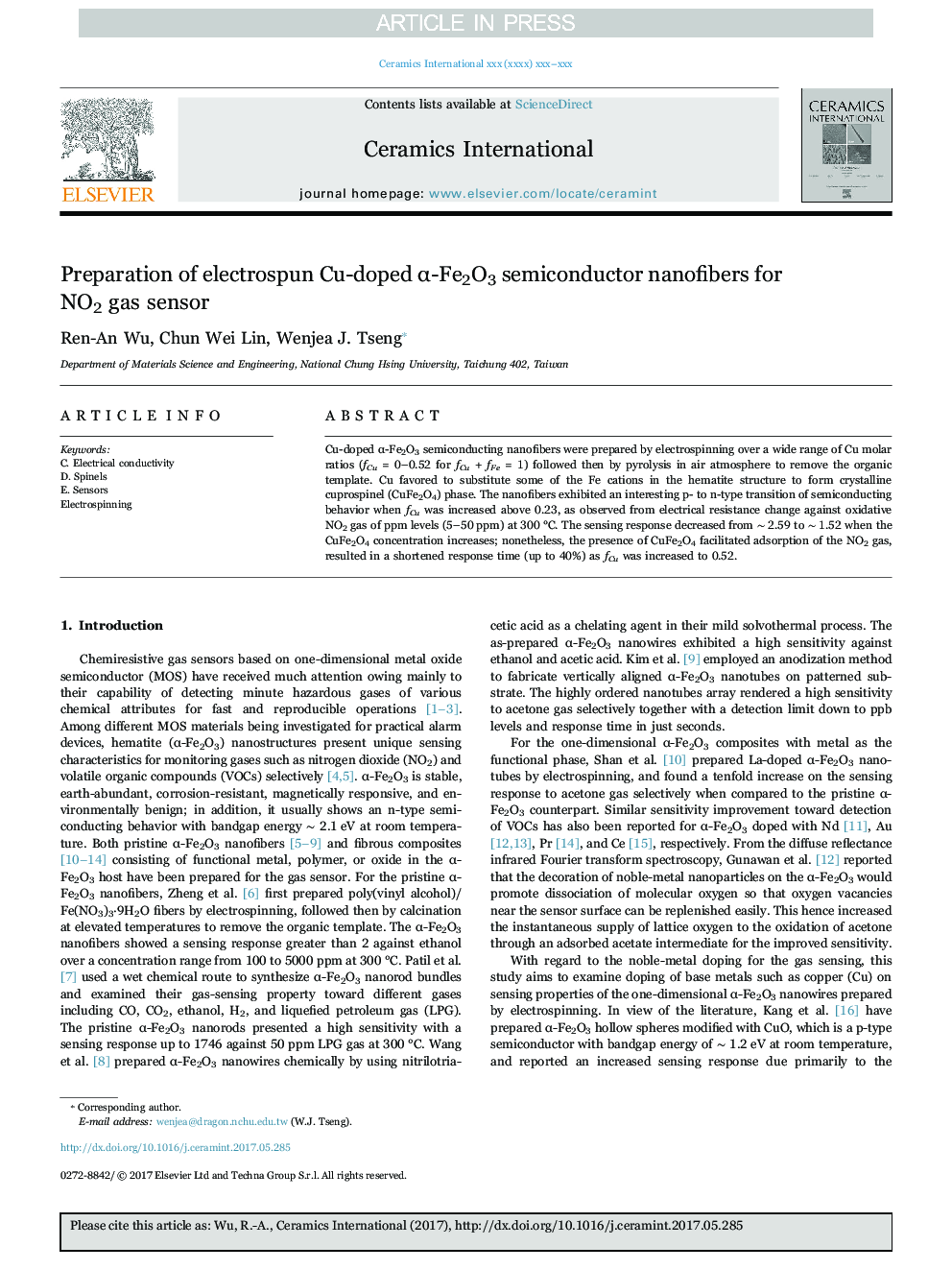| Article ID | Journal | Published Year | Pages | File Type |
|---|---|---|---|---|
| 5438883 | Ceramics International | 2017 | 6 Pages |
Abstract
Cu-doped α-Fe2O3 semiconducting nanofibers were prepared by electrospinning over a wide range of Cu molar ratios (fCu = 0-0.52 for fCu + fFe = 1) followed then by pyrolysis in air atmosphere to remove the organic template. Cu favored to substitute some of the Fe cations in the hematite structure to form crystalline cuprospinel (CuFe2O4) phase. The nanofibers exhibited an interesting p- to n-type transition of semiconducting behavior when fCu was increased above 0.23, as observed from electrical resistance change against oxidative NO2 gas of ppm levels (5-50 ppm) at 300 °C. The sensing response decreased from ⼠2.59 to ⼠1.52 when the CuFe2O4 concentration increases; nonetheless, the presence of CuFe2O4 facilitated adsorption of the NO2 gas, resulted in a shortened response time (up to 40%) as fCu was increased to 0.52.
Related Topics
Physical Sciences and Engineering
Materials Science
Ceramics and Composites
Authors
Ren-An Wu, Chun Wei Lin, Wenjea J. Tseng,
